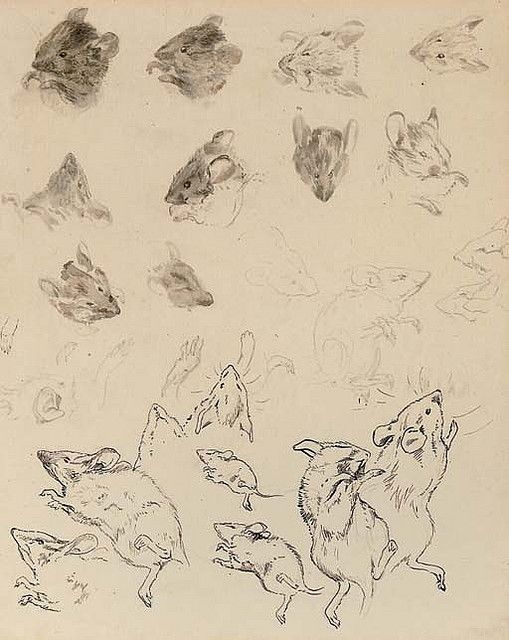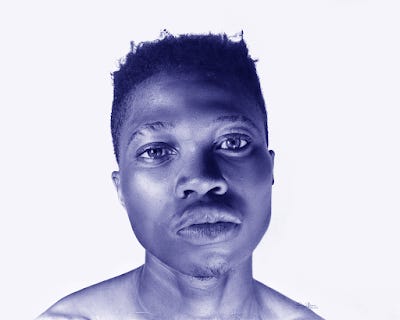Correction to original article. Classes begin in October, not September. Please see announcement after the article.
Beatrix Potter (born Helen Beatrix in 1866) was mostly known for her delightful stories of Peter Rabbit. That's really the only knowledge I had. Well, maybe I had heard she lived in the Lake District, a beautiful part of England. But that was all. Then the movie Miss Potter came out. I was enchanted by her determination and grit. While in real life she certainly had those qualities. There's so much more to tell.For instance, if it hadn't been for the all-male board of The Linnean Society of London, we probably wouldn't have heard of Peter Rabbit and possibly Beatrix Potter. The story goes that she had a passion for bontany, especially mushrooms or fungi (mycology). Employed by the Royal Botanical Garden in Kew, London, Beatrix must have been in heaven because the garden is still considered to have the best mycological collection in the world. In fact, she was so fascinated by mycology she penned her own scientific paper called On the Germination of the Spores of Agaricaceae by Helen B. Potter in 1897. It was presented to the Linnean Society.
Some say that the paper was rejected because she was a woman, but on further study, I've learned that her paper was indeed read (not by her, woman weren't allowed to do that until 1905). She withdrew the paper herself after it was read and discussed. Who knows why, but it appears she
redirected her attention to the little stories and illustrations that she sent in letters to her nanny's children. In the end, a friend suggested Beatrix put these stories in book form. One such picture letter is below, where she writes in 1893 to Noel Moore:
"I don't know what to write about so I shall tell you a story of 4 little rabbits, whose names were Flopsy, Mopsy, Cottontail and Peter."
 |
| First addition of Peter Rabbit |
Interestingly, but not a surprising, six publishing houses rejected her book. She therefore self-published it in 1901. Publisher Frederick Warner & Company saw the book and offered Beatrix a contract, publishing the book in 1902. It was a smashing hit; so much so, she was the first to merchandise a book with a stuff rabbit.Of course, Beatrix's background is filled with a love for drawing and painting. Both she and brother, Bertrand, had isolated childhoods, schooled mostly by nannies and tutors. They spent much of their free time exploring nature. On holidays (vacations), they would go to the Lake District or Scotland. They had a deep appreciation of animals (having lots of pets) and nature.
While the whole family was artistic, Beatrix started illustrating traditional rhymes and stories, such as Cinderella, Sleeping Beauty and Puss in the Boots. Just like all of us, she had to practice, practice, practice.
Loved pierced her heart with Norman Warne, who she worked closely with her at the publishing house. In one of Norman's letters, he proposed. Beatrix's parents disapproved because he was a tradesman and she an upper-class woman. Both exchanged rings anyway. Within a month though, he was gone with pernicious anemia. She wore his ring on the right hand until she died.
In total, Beatrix wrote 60 books, 23 of which were children's stories. In 1905 she bought Hill Top Farm at Near Sawrey, a village in the Lake District. She married William Heelis in 1913, who was a solicitor. She was 47 and he was 42. Both she and William became involved in preserving the land within the Lake District and became rather good at farming.
I have grown to love Beatrix Potter's work. Her mycological work is exquisite. Here are a few examples:
Then there are her sketches:
Study of mice and a rabbit
Beatrix Potter died of pneumonia in 1943.
Would you be interested in seeing more of Beatrix's work first-hand?
That's possible! We are planning a sketching trip to the Lake District next September 3-10, 2023, which will include a tour of the Derwent Pencil Factory, Beatrix Potter's home and a short trip to Scotland. Not all the details are settled yet, but if you're interested let me know. I'll need at least ten people to make it a reality. I'll try to keep the workshop cost at $600, excluding lodging, food, transportation.
What's coming up?
Correction to original announcement. Classes are not in September but in October.











































 ve done on canvas, which have survived room dust, but usually, I have put my projects within a frame with glass. I have used
ve done on canvas, which have survived room dust, but usually, I have put my projects within a frame with glass. I have used 










.jpg)



